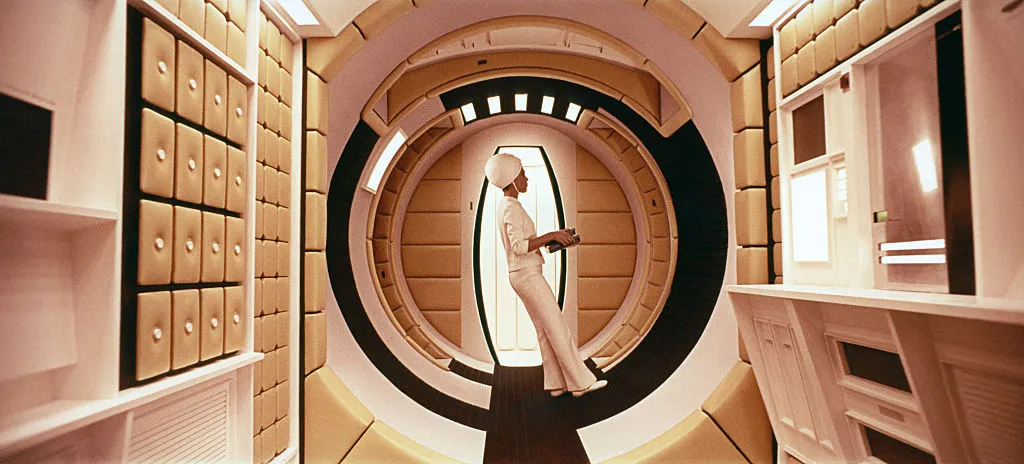The generation of artificial gravity via a spinning spacecraft is a popular trope in science fiction, but how possible would it be to make this science fact?
The cornerstone of Einstein’s general theory of relativity is his observation that gravity and acceleration are indistinguishable.
Put someone in a rocket that accelerates through space at 9.8m/s2 (35km/h) and their feet will be glued to the floor of their cabin just as if they were experiencing gravity on the surface of the Earth.
Of course, accelerating at 9.8m/s2 in a straight line forever isn’t a very practical way of simulating gravity.
A better way is to exploit ‘centrifugal acceleration’, an effect in which someone spinning – for instance, on a merry-go-round – appears to be flung outwards.
This is the phenomenon that Stanley Kubrick exploited in his film 2001: A Space Odyssey, one of the best space and sci-fi movies of all time.

In the film, Dr Heywood Floyd’s shuttle docks at the axis of Space Station 1 – a 275m (900ft) diameter, slowly rotating wheel.
As he makes his way outward along one of the spoke-like corridors, his weight (which is a measure of the gravitational force acting on his body) gradually increases until finally, at the rim of the station, it is close to his weight on Earth.
Of course, it’s not quite the same as gravity on Earth.
If Floyd drops an object, it does not fall directly to the floor, but appears to be deflected in the opposite direction to the space station’s rotation.
This is known as the ‘Coriolis effect’.
The Coriolis effect illustrates a subtle point that was recognised by Einstein: gravity is only truly indistinguishable from acceleration in very small volumes of space.
This means that, although it is possible for us to simulate something like Earth’s gravity, we can never really do it perfectly.
This article originally appeared in the May 2006 issue of BBC Sky at Night Magazine.

